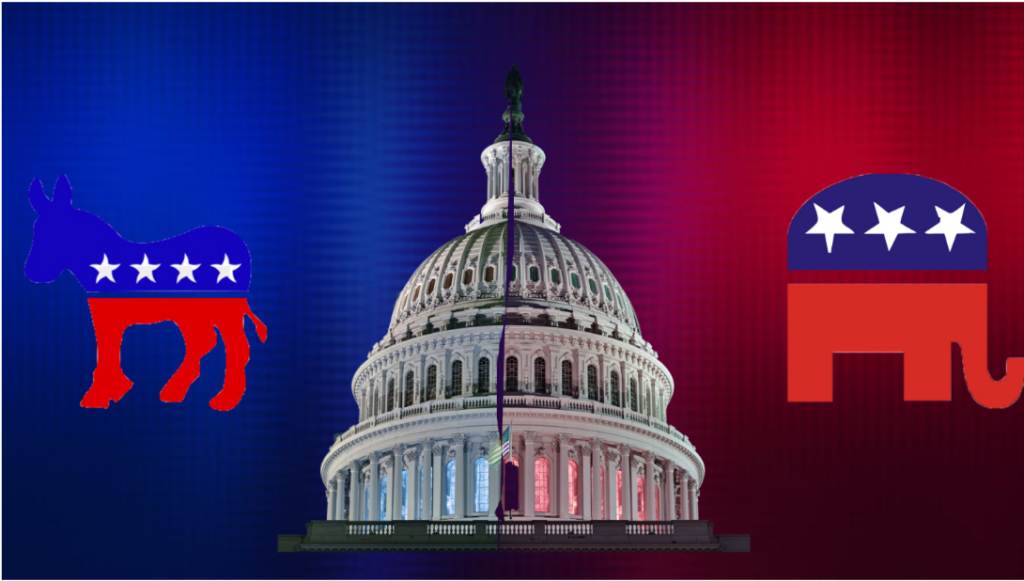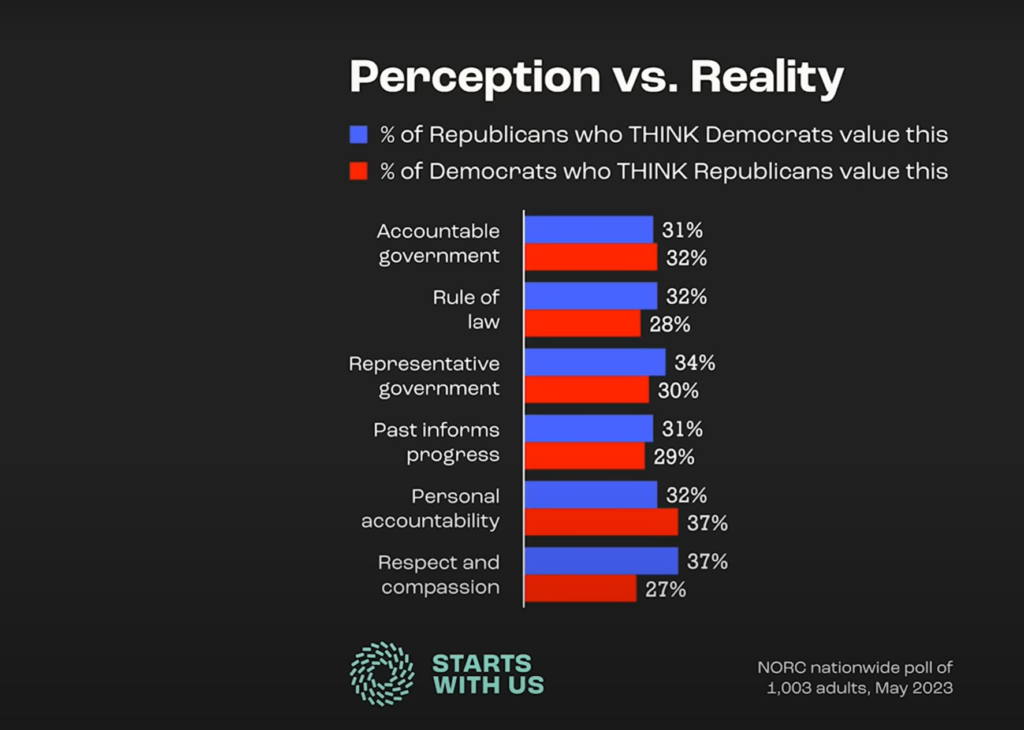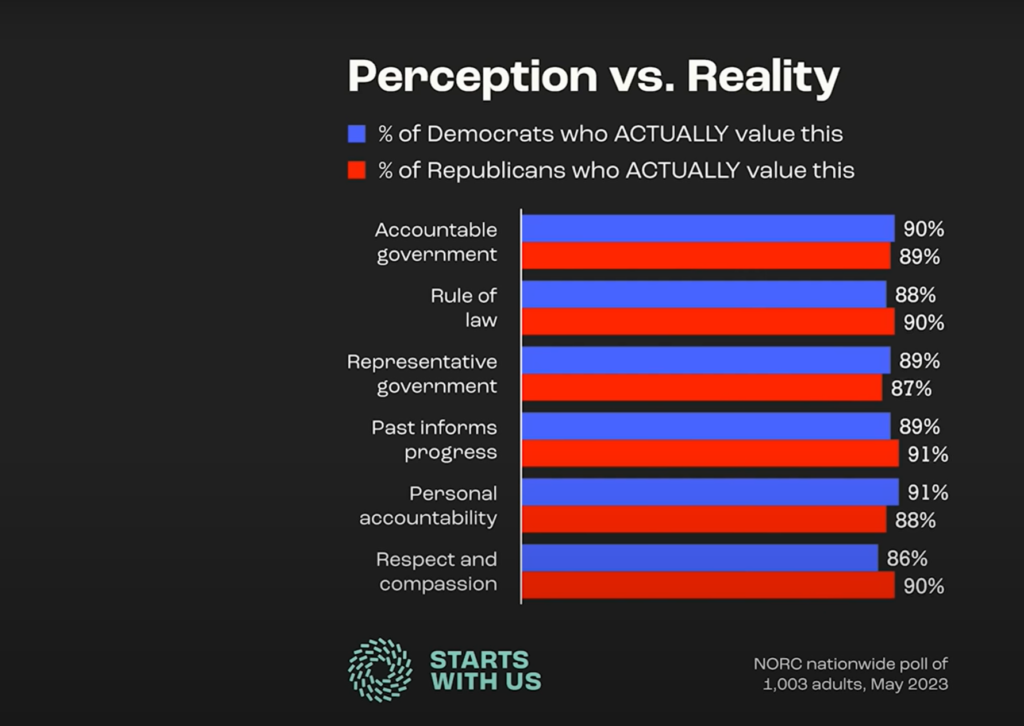
Most Americans believe that the U.S. is politically polarized, and a majority believe that this polarization will worsen in the future (Lee 2022). Political polarization can make American democracy vulnerable, as evident in other countries, such as Turkey (McCoy, Rahman, and Somer 2018). This is because polarization erodes two norms that American democracy relies on to function effectively: forbearance (government institutions do not exercise the full legal extent of their powers in the spirit of fair play) and mutual tolerance (parties treat each other as legitimate contenders for power) (Levitsky and Ziblatt 2018).
Some polarization can benefit democracy because it allows people to distinguish between parties and therefore easily choose which party to support. However, too much can lead to political gridlock and government inaction: this is evident in the United States. Polarization can even lead to the collapse of democracy, as in Venezuela (McCoy et. al 2018).
Polarization’s Decades-Long Weakening of American Democracy
In the late 1970s, American politicians started to break the norms of forbearance and mutual tolerance more often. By the late 1990s and early 2000s, Democrats and Republicans both engaged in frequent norm-breaking (Levitsky and Ziblatt 2018).
Less forbearance at both the state and federal levels is evident in increasingly aggressive gerrymandering, the skyrocketing use of the filibuster and unilateral executive orders, and the use of impeachment as a political tool (Levitsky and Ziblatt 2018). These tactics have been employed by both major parties, but especially Republicans, illustrating both parties’ desire to achieve victory by any means necessary (Abramowitz and McCoy 2019; Levitsky and Ziblatt 2018).
Mutual tolerance has eroded as well. One glaring example of this was when right-wing politicians and media made outlandish claims about Barack Obama during and after the 2008 presidential election, including that he was a “Marxist” and “palling around with terrorists” (Campbell 2016; Levitsky and Ziblatt 2018).
Increased Polarization During Trump’s Presidency
American democracy continued to weaken during Donald Trump’s presidency. Trump employed political strategies reminiscent of other politicians who severely weakened democracy in their countries, such as Hugo Chavez in Venezuela. These strategies included undermining critical media outlets (Levitsky and Ziblatt 2018; McCoy et. al 2018). Trump’s inciting of the January 6th insurrection further shows his disregard for democracy (Richardson 2023:153).
Trump also further polarized America through democratic norm-breaking at a level never seen in modern American history (Abramowitz and McCoy 2019). His lack of mutual tolerance is evident in his claims that the 2020 election was “rigged” because it illustrates that he does not see Democrats as legitimate contenders for power (Richardson 2023:150). Trump even engaged in criminal activity by withholding funding from the Ukrainian government until they investigated Joe Biden’s son, which Trump thought would help him win the 2020 election (Richardson 2023:117-119). This shows a blatant disregard for forbearance.
Trump has also divided America by exploiting growing racial and religious divisions through anti-minority and anti-immigrant rhetoric and by stoking white nationalist groups (Abramowitz and McCoy 2019; Levitsky and Ziblatt 2018).
Continuing Division Under Biden
Joe Biden’s presidency showed that the norm of mutual tolerance is being broken by both parties: Donald Trump and Biden both have claimed that the other is a threat to democracy in some way (NBC 2023; PBS 2023). However, Biden’s claim has more merit because of Trump’s willingness to engage in undemocratic actions as president. The erosion of mutual tolerance and forbearance has weakened the guardrails that have protected American democracy from an all-out partisan war that has destroyed democracies in many parts of the world (Levitsky and Ziblatt 2018).
The Republican Party has even arguably turned away from democracy recently because of a Trumpist majority within the party and the willingness of mainstream leaders to tolerate and even sometimes protect anti-democratic politicians (Barrón-López and Conciatori 2023; Wehner 2021).
Combatting Polarization
What can be done about polarization? Addressing the underlying forces polarizing America (racial and religious realignment and economic inequality) would help (Abramowitz and McCoy 2019; Levitsky and Ziblatt 2018). This realignment involves many white working-class voters, who have been changing their alignment from Democrat to Republican since the mid-1960s when the Democratic Party began firmly supporting the Civil Rights Movement. It also involves white religious conservatives switching from Democrat to Republican in response to the Republican Party starting to advocate for overturning Roe v. Wade in 1980 (Abramowitz and McCoy 2019). These changes and many Southern voters switching from Democrat to Republican in the 1970s and 1980s increased polarization by making the people in each party more similar ideologically (Campbell 2016; Abramowitz and McCoy 2019).
These underlying issues polarizing America could be solved by making the Republican party’s values more center-right. Although doing this would be an arduous task, there are historical examples of conservative political parties being refounded in other parts of the world. One example is the Christian Democratic Party’s creation in West Germany after World War II (Levitsky and Ziblatt 2018).
Aside from possible government action, individuals can also help to reduce polarization. People more frequently interacting with those unlike them, especially in terms of political affiliation, would help to reduce polarization (McCoy et. al 2018; Butters and Hare 2022).
In addition, if people only read one news source, they can create an “information bubble” that consistently gives them one perspective on issues and contributes to polarization (McCoy et. al 2018). Maybe getting news from several sources could lessen polarization.
While polarization in America may currently seem intense, we may not be as polarized as we think. A 2023 survey asked Democrats and Republicans whether opposing party members value several ideas, like a representative government and compassion. Roughly 30% of members of both parties thought that members of the opposing party prized each of these values. In actuality, about 90% of members of both parties valued each of them (Starts With Us 2023).


Overcoming polarization will be difficult for American democracy. However, the fact that Americans still have some common ground in important areas provides hope for doing so.
References
Abramowitz, Alan, and Jennifer McCoy. 2019. “United States: Racial Resentment, Negative Partisanship, and Polarization in Trump’s America.” The Annals of the American Academy of Political and Social Science 681(1). Retrieved April 20, 2024 (https://journals.sagepub.com/toc/anna/681/1).
Barrón-López, Laura, and Tess Conciatori 2023. “‘Tyranny of the Minority’ Writers Say Constitution Not Strong Enough to Protect Democracy.” PBS. Retrieved April 5, 2024. (https://www.pbs.org/newshour/show/tyranny-of-the-minority-writers-say-constitution-not-strong-enough-to-protect-democracy).
Butters, Ross, and Christopher Hare. 2022. “Polarized Networks? New Evidence on American Voters Political Discussion Networks.” Political Behavior 44(3). Retrieved April 20, 2024 (https://www.proquest.com/socabs/docview/2708604272/4E97430BA22741B0PQ/17?accountid=11264&sourcetype=Scholarly%20Journals).
Campbell, James E. 2016. Polarized: Making Sense of a Divided America. Princeton: Princeton University Press. Retrieved April 26, 2024 (https://www.jstor.org/stable/j.ctt1wf4cgv.1)
Levitsky, Steven, and Daniel Ziblatt. 2018. How Democracies Die. New York: Crown Publishing Group. Retrieved April 5, 2024 (chrome-extension://efaidnbmnnnibpcajpcglclefindmkaj/https://ia600707.us.archive.org/3/items/HowDemocraciesDieStevenLevitsky/How%20Democracies%20Die%20-%20Steven%20Levitsky.pdf).
Lee, Amber Hye-Yon. 2022. “Social Trust in Polarized Times: How Perceptions of Political Polarization Affect Americans’ Trust in Each Other.” Political Behavior 44(3). Retrieved February 22, 2024 (https://www.proquest.com/socabs/scholarly-journals/social-trust-polarized-times-how-perceptions/docview/2708604234/sem-2?accountid=11264).
McCoy, Jennifer, Tahmina Rahman, and Murat Somer. 2018. “Polarization and the Global Crisis of Democracy: Common Patterns, Dynamics, and Pernicious Consequences for Democratic Polities.” American Behavioral Scientist 62(1). Retrieved March 8, 2024 (https://journals.sagepub.com/doi/full/10.1177/0002764218759576).
NBC News 2023. “In Forceful Condemnation of Trump, Biden Warns that ‘MAGA’ Backers Pose Grave Threat to Democracy.” NBC. Retrieved April 5, 2024. (https://www.nbcnews.com/politics/2024-election/biden-trump-describe-maga-extremist-rcna117796).
PBS News Hour 2023. “Retread Scare: Trump and Other Republicans Evoke Another Era by Calling Democrats ‘Communists’.” PBS. Retrieved April 5, 2024. (https://www.pbs.org/newshour/politics/retread-scare-trump-and-other-republicans-evoke-another-era-by-calling-democrats-communists).
Richardson, Heather Cox. 2023. Democracy Awakening. New York: Viking.
Starts With Us. 2023. “Do Democrats and Republicans Share Values? Perception vs. Reality.” Youtube website. Retrieved April 5, 2024. (https://www.youtube.com/watch?v=fmxSDK6sL08).
Wehner, Peter. 2021. “The GOP Is a Grave Threat to American Democracy.” The Atlantic. Retrieved May 2, 2024 (https://www.theatlantic.com/ideas/archive/2021/04/gop-grave-threat-american-democracy/618693/).